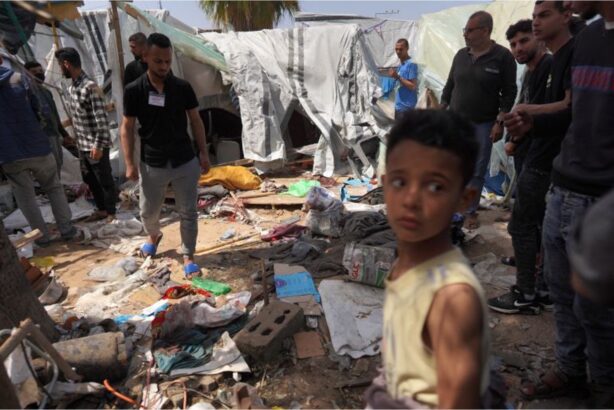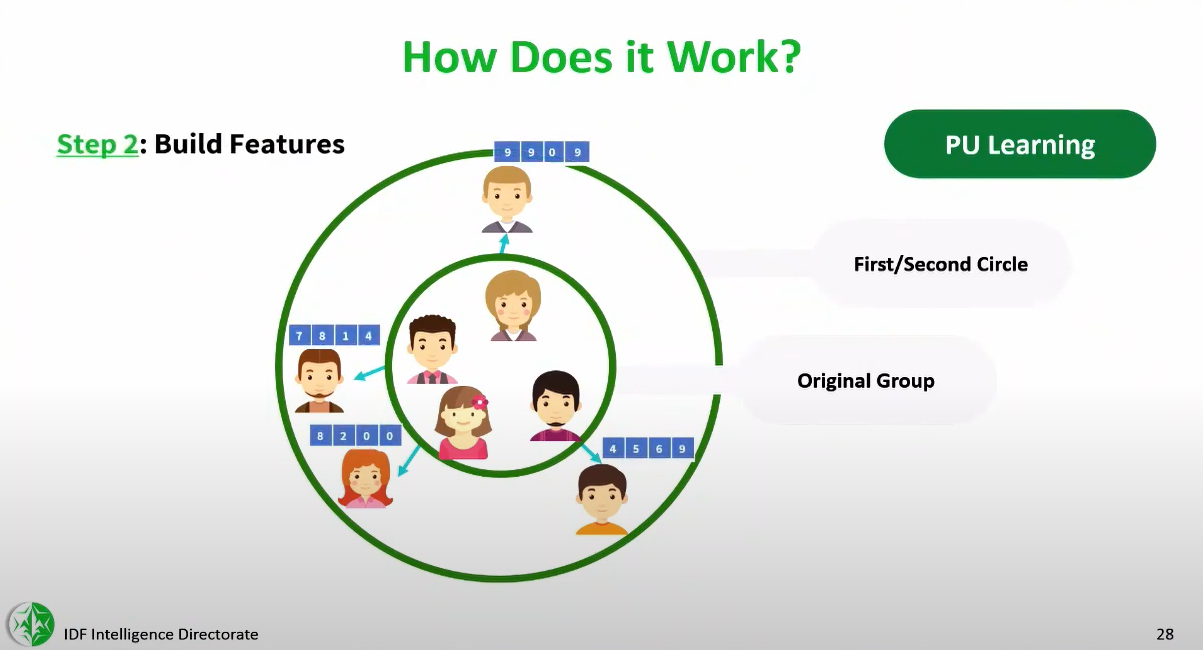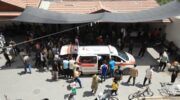The Israeli army has marked tens of thousands of Gazans as suspects for assassination, using an AI targeting system with little human oversight and a permissive policy for casualties
One of the automated system called “Where’s Daddy?” specifically bombed individuals when they had entered their family’s residences — usually at night while their whole families were present
The result is that thousands of Palestinians — most of them women and children or people who were not involved in the fighting — were wiped out by Israeli airstrikes because of the AI program’s decisions
By Yuval Abraham, reposted from +972
In 2021, a book titled “The Human-Machine Team: How to Create Synergy Between Human and Artificial Intelligence That Will Revolutionize Our World” was released in English under the pen name “Brigadier General Y.S.” In it, the author — a man who we confirmed to be the current commander of the elite Israeli intelligence unit 8200 — makes the case for designing a special machine that could rapidly process massive amounts of data to generate thousands of potential “targets” for military strikes in the heat of a war. Such technology, he writes, would resolve what he described as a “human bottleneck for both locating the new targets and decision-making to approve the targets.”
Such a machine, it turns out, actually exists. A new investigation by +972 Magazine and Local Call reveals that the Israeli army has developed an artificial intelligence-based program known as “Lavender,” unveiled here for the first time. According to six Israeli intelligence officers, who have all served in the army during the current war on the Gaza Strip and had first-hand involvement with the use of AI to generate targets for assassination, Lavender has played a central role in the unprecedented bombing of Palestinians, especially during the early stages of the war. In fact, according to the sources, its influence on the military’s operations was such that they essentially treated the outputs of the AI machine “as if it were a human decision.”
Formally, the Lavender system is designed to mark all suspected operatives in the military wings of Hamas and Palestinian Islamic Jihad (PIJ), including low-ranking ones, as potential bombing targets. The sources told +972 and Local Call that, during the first weeks of the war, the army almost completely relied on Lavender, which clocked as many as 37,000 Palestinians as suspected militants — and their homes — for possible air strikes.
During the early stages of the war, the army gave sweeping approval for officers to adopt Lavender’s kill lists, with no requirement to thoroughly check why the machine made those choices or to examine the raw intelligence data on which they were based. One source stated that human personnel often served only as a “rubber stamp” for the machine’s decisions, adding that, normally, they would personally devote only about “20 seconds” to each target before authorizing a bombing — just to make sure the Lavender-marked target is male. This was despite knowing that the system makes what are regarded as “errors” in approximately 10 percent of cases, and is known to occasionally mark individuals who have merely a loose connection to militant groups, or no connection at all.
Moreover, the Israeli army systematically attacked the targeted individuals while they were in their homes — usually at night while their whole families were present — rather than during the course of military activity. According to the sources, this was because, from what they regarded as an intelligence standpoint, it was easier to locate the individuals in their private houses. Additional automated systems, including one called “Where’s Daddy?” also revealed here for the first time, were used specifically to track the targeted individuals and carry out bombings when they had entered their family’s residences.
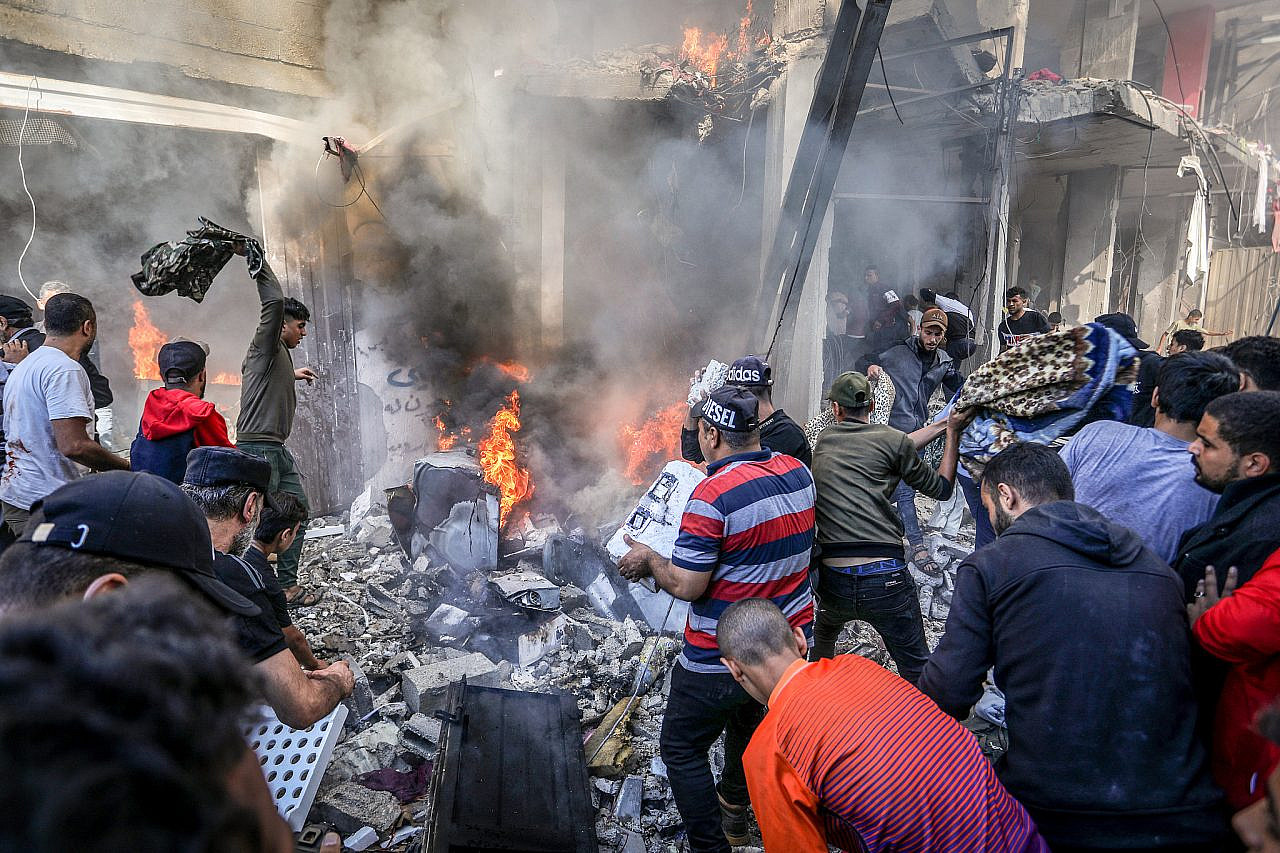
The result, as the sources testified, is that thousands of Palestinians — most of them women and children or people who were not involved in the fighting — were wiped out by Israeli airstrikes, especially during the first weeks of the war, because of the AI program’s decisions.
“We were not interested in killing [Hamas] operatives only when they were in a military building or engaged in a military activity,” A., an intelligence officer, told +972 and Local Call. “On the contrary, the IDF bombed them in homes without hesitation, as a first option. It’s much easier to bomb a family’s home. The system is built to look for them in these situations.”
The Lavender machine joins another AI system, “The Gospel,” about which information was revealed in a previous investigation by +972 and Local Call in November 2023, as well as in the Israeli military’s own publications. A fundamental difference between the two systems is in the definition of the target: whereas The Gospel marks buildings and structures that the army claims militants operate from, Lavender marks people — and puts them on a kill list.
In addition, according to the sources, when it came to targeting alleged junior militants marked by Lavender, the army preferred to only use unguided missiles, commonly known as “dumb” bombs (in contrast to “smart” precision bombs), which can destroy entire buildings on top of their occupants and cause significant casualties. “You don’t want to waste expensive bombs on unimportant people — it’s very expensive for the country and there’s a shortage [of those bombs],” said C., one of the intelligence officers. Another source said that they had personally authorized the bombing of “hundreds” of private homes of alleged junior operatives marked by Lavender, with many of these attacks killing civilians and entire families as “collateral damage.”
In an unprecedented move, according to two of the sources, the army also decided during the first weeks of the war that, for every junior Hamas operative that Lavender marked, it was permissible to kill up to 15 or 20 civilians; in the past, the military did not authorize any “collateral damage” during assassinations of low-ranking militants. The sources added that, in the event that the target was a senior Hamas official with the rank of battalion or brigade commander, the army on several occasions authorized the killing of more than 100 civilians in the assassination of a single commander.
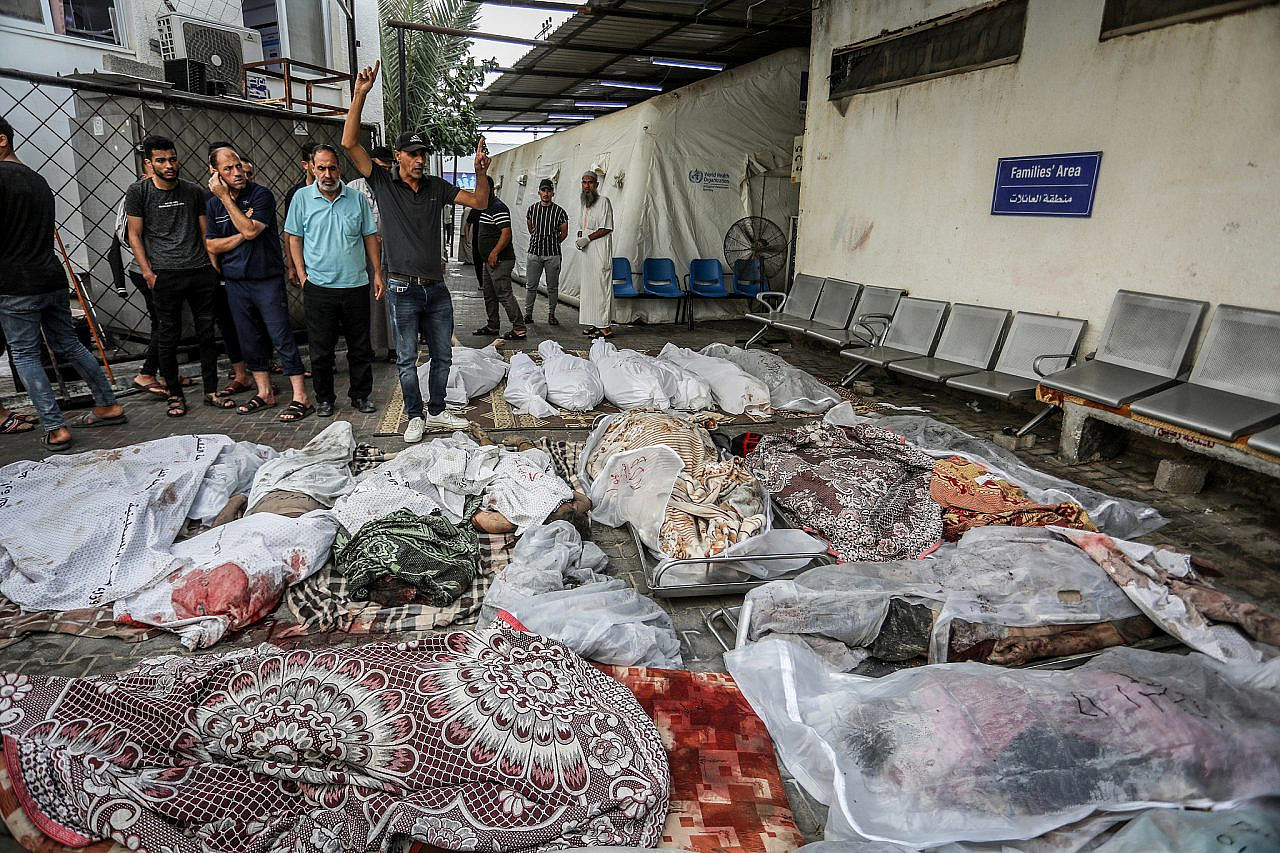
The following investigation is organized according to the six chronological stages of the Israeli army’s highly automated target production in the early weeks of the Gaza war. First, we explain the Lavender machine itself, which marked tens of thousands of Palestinians using AI. Second, we reveal the “Where’s Daddy?” system, which tracked these targets and signaled to the army when they entered their family homes. Third, we describe how “dumb” bombs were chosen to strike these homes.
Fourth, we explain how the army loosened the permitted number of civilians who could be killed during the bombing of a target. Fifth, we note how automated software inaccurately calculated the amount of non-combatants in each household. And sixth, we show how on several occasions, when a home was struck, usually at night, the individual target was sometimes not inside at all, because military officers did not verify the information in real time.
STEP 1: GENERATING TARGETS
‘Once you go automatic, target generation goes crazy’
In the Israeli army, the term “human target” referred in the past to a senior military operative who, according to the rules of the military’s International Law Department, can be killed in their private home even if there are civilians around. Intelligence sources told +972 and Local Call that during Israel’s previous wars, since this was an “especially brutal” way to kill someone — often by killing an entire family alongside the target — such human targets were marked very carefully and only senior military commanders were bombed in their homes, to maintain the principle of proportionality under international law.
But after October 7 — when Hamas-led militants launched a deadly assault on southern Israeli communities, killing around 1,200 people and abducting 240 — the army, the sources said, took a dramatically different approach. Under “Operation Iron Swords,” the army decided to designate all operatives of Hamas’ military wing as human targets, regardless of their rank or military importance. And that changed everything.
The new policy also posed a technical problem for Israeli intelligence. In previous wars, in order to authorize the assassination of a single human target, an officer had to go through a complex and lengthy “incrimination” process: cross-check evidence that the person was indeed a senior member of Hamas’ military wing, find out where he lived, his contact information, and finally know when he was home in real time. When the list of targets numbered only a few dozen senior operatives, intelligence personnel could individually handle the work involved in incriminating and locating them.
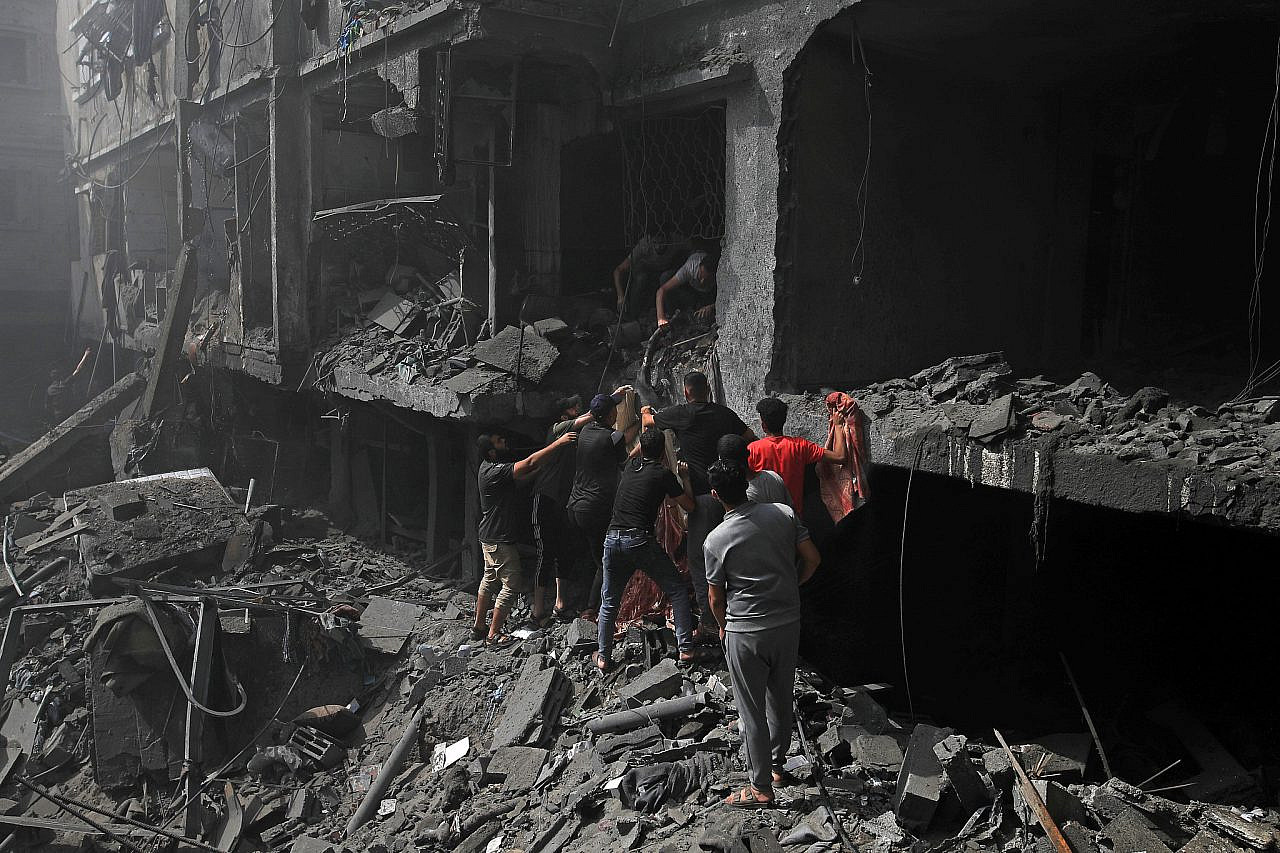
However, once the list was expanded to include tens of thousands of lower-ranking operatives, the Israeli army figured it had to rely on automated software and artificial intelligence. The result, the sources testify, was that the role of human personnel in incriminating Palestinians as military operatives was pushed aside, and AI did most of the work instead. According to four of the sources who spoke to +972 and Local Call, Lavender — which was developed to create human targets in the current war — has marked some 37,000 Palestinians as suspected “Hamas militants,” most of them junior, for assassination (the IDF Spokesperson denied the existence of such a kill list in a statement to +972 and Local Call).
“We didn’t know who the junior operatives were, because Israel didn’t track them routinely [before the war],” explained senior officer B. to +972 and Local Call, illuminating the reason behind the development of this particular target machine for the current war. “They wanted to allow us to attack [the junior operatives] automatically. That’s the Holy Grail. Once you go automatic, target generation goes crazy.”
The sources said that the approval to automatically adopt Lavender’s kill lists, which had previously been used only as an auxiliary tool, was granted about two weeks into the war, after intelligence personnel “manually” checked the accuracy of a random sample of several hundred targets selected by the AI system. When that sample found that Lavender’s results had reached 90 percent accuracy in identifying an individual’s affiliation with Hamas, the army authorized the sweeping use of the system. From that moment, sources said that if Lavender decided an individual was a militant in Hamas, they were essentially asked to treat that as an order, with no requirement to independently check why the machine made that choice or to examine the raw intelligence data on which it is based.
“At 5 a.m., [the air force] would come and bomb all the houses that we had marked,” B. said. “We took out thousands of people. We didn’t go through them one by one — we put everything into automated systems, and as soon as one of [the marked individuals] was at home, he immediately became a target. We bombed him and his house.”
“It was very surprising for me that we were asked to bomb a house to kill a ground soldier, whose importance in the fighting was so low,” said one source about the use of AI to mark alleged low-ranking militants. “I nicknamed those targets ‘garbage targets.’ Still, I found them more ethical than the targets that we bombed just for ‘deterrence’ — highrises that are evacuated and toppled just to cause destruction.”
The deadly results of this loosening of restrictions in the early stage of the war were staggering. According to data from the Palestinian Health Ministry in Gaza, on which the Israeli army has relied almost exclusively since the beginning of the war, Israel killed some 15,000 Palestinians — almost half of the death toll so far — in the first six weeks of the war, up until a week-long ceasefire was agreed on Nov. 24.
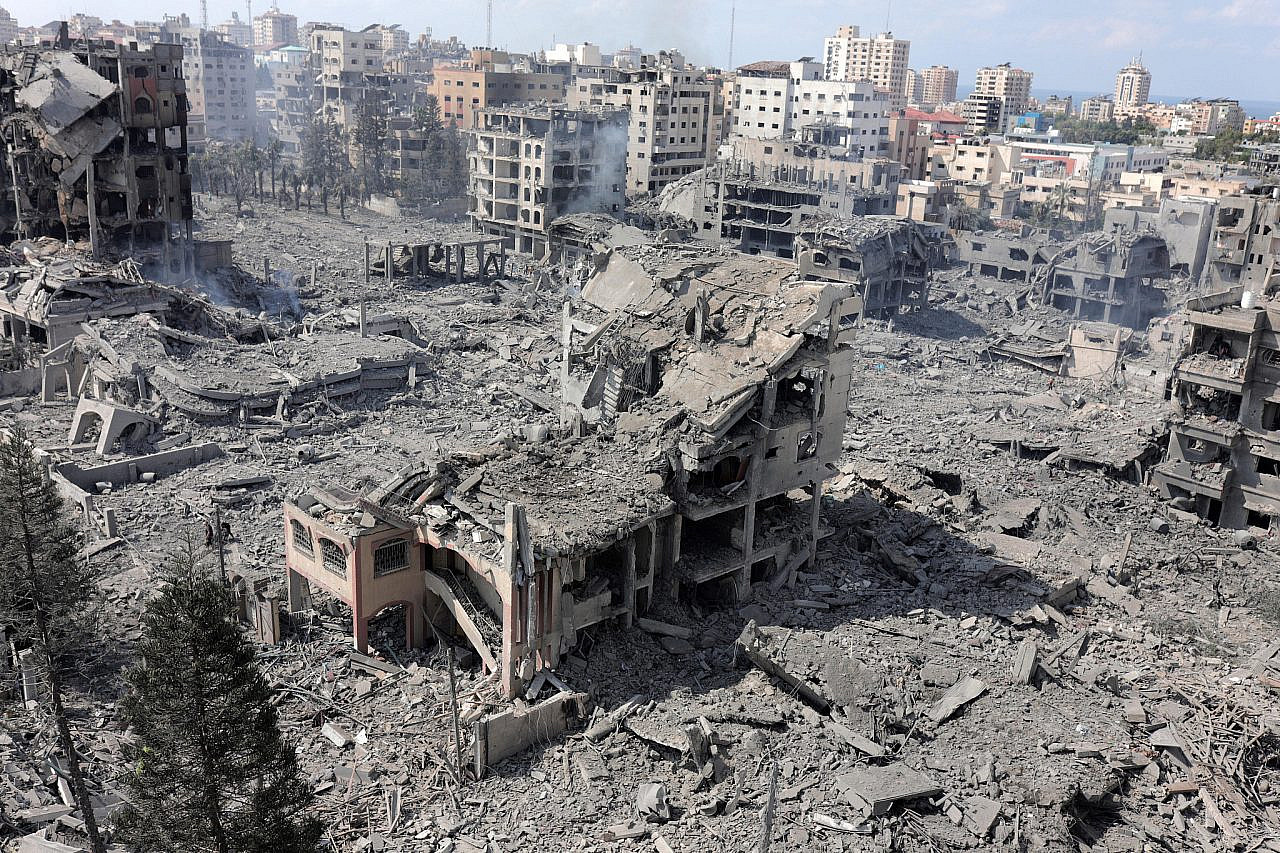
‘The more information and variety, the better’
The Lavender software analyzes information collected on most of the 2.3 million residents of the Gaza Strip through a system of mass surveillance, then assesses and ranks the likelihood that each particular person is active in the military wing of Hamas or PIJ. According to sources, the machine gives almost every single person in Gaza a rating from 1 to 100, expressing how likely it is that they are a militant.
Lavender learns to identify characteristics of known Hamas and PIJ operatives, whose information was fed to the machine as training data, and then to locate these same characteristics — also called “features” — among the general population, the sources explained. An individual found to have several different incriminating features will reach a high rating, and thus automatically becomes a potential target for assassination.
In “The Human-Machine Team,” the book referenced at the beginning of this article, the current commander of Unit 8200 advocates for such a system without referencing Lavender by name. (The commander himself also isn’t named, but five sources in 8200 confirmed that the commander is the author, as reported also by Haaretz.) Describing human personnel as a “bottleneck” that limits the army’s capacity during a military operation, the commander laments: “We [humans] cannot process so much information. It doesn’t matter how many people you have tasked to produce targets during the war — you still cannot produce enough targets per day.”
The solution to this problem, he says, is artificial intelligence. The book offers a short guide to building a “target machine,” similar in description to Lavender, based on AI and machine-learning algorithms. Included in this guide are several examples of the “hundreds and thousands” of features that can increase an individual’s rating, such as being in a Whatsapp group with a known militant, changing cell phone every few months, and changing addresses frequently.
“The more information, and the more variety, the better,” the commander writes. “Visual information, cellular information, social media connections, battlefield information, phone contacts, photos.” While humans select these features at first, the commander continues, over time the machine will come to identify features on its own. This, he says, can enable militaries to create “tens of thousands of targets,” while the actual decision as to whether or not to attack them will remain a human one.
The book isn’t the only time a senior Israeli commander hinted at the existence of human target machines like Lavender. +972 and Local Call have obtained footage of a private lecture given by the commander of Unit 8200’s secretive Data Science and AI center, “Col. Yoav,” at Tel Aviv University’s AI week in 2023, which was reported on at the time in the Israeli media.
In the lecture, the commander speaks about a new, sophisticated target machine used by the Israeli army that detects “dangerous people” based on their likeness to existing lists of known militants on which it was trained. “Using the system, we managed to identify Hamas missile squad commanders,” “Col. Yoav” said in the lecture, referring to Israel’s May 2021 military operation in Gaza, when the machine was used for the first time.
The lecture presentation slides, also obtained by +972 and Local Call, contain illustrations of how the machine works: it is fed data about existing Hamas operatives, it learns to notice their features, and then it rates other Palestinians based on how similar they are to the militants.
“We rank the results and determine the threshold [at which to attack a target],” “Col. Yoav” said in the lecture, emphasizing that “eventually, people of flesh and blood take the decisions. In the defense realm, ethically speaking, we put a lot of emphasis on this. These tools are meant to help [intelligence officers] break their barriers.”
In practice, however, sources who have used Lavender in recent months say human agency and precision were substituted by mass target creation and lethality.
‘There was no “zero-error” policy’
B., a senior officer who used Lavender, echoed to +972 and Local Call that in the current war, officers were not required to independently review the AI system’s assessments, in order to save time and enable the mass production of human targets without hindrances.
“Everything was statistical, everything was neat — it was very dry,” B. said. He noted that this lack of supervision was permitted despite internal checks showing that Lavender’s calculations were considered accurate only 90 percent of the time; in other words, it was known in advance that 10 percent of the human targets slated for assassination were not members of the Hamas military wing at all.
For example, sources explained that the Lavender machine sometimes mistakenly flagged individuals who had communication patterns similar to known Hamas or PIJ operatives — including police and civil defense workers, militants’ relatives, residents who happened to have a name and nickname identical to that of an operative, and Gazans who used a device that once belonged to a Hamas operative.
“How close does a person have to be to Hamas to be [considered by an AI machine to be] affiliated with the organization?” said one source critical of Lavender’s inaccuracy. “It’s a vague boundary. Is a person who doesn’t receive a salary from Hamas, but helps them with all sorts of things, a Hamas operative? Is someone who was in Hamas in the past, but is no longer there today, a Hamas operative? Each of these features — characteristics that a machine would flag as suspicious — is inaccurate.”

Similar problems exist with the ability of target machines to assess the phone used by an individual marked for assassination. “In war, Palestinians change phones all the time,” said the source. “People lose contact with their families, give their phone to a friend or a wife, maybe lose it. There is no way to rely 100 percent on the automatic mechanism that determines which [phone] number belongs to whom.”
According to the sources, the army knew that the minimal human supervision in place would not discover these faults. “There was no ‘zero-error’ policy. Mistakes were treated statistically,” said a source who used Lavender. “Because of the scope and magnitude, the protocol was that even if you don’t know for sure that the machine is right, you know that statistically it’s fine. So you go for it.”
“It has proven itself,” said B., the senior source. “There’s something about the statistical approach that sets you to a certain norm and standard. There has been an illogical amount of [bombings] in this operation. This is unparalleled, in my memory. And I have much more trust in a statistical mechanism than a soldier who lost a friend two days ago. Everyone there, including me, lost people on October 7. The machine did it coldly. And that made it easier.”
Another intelligence source, who defended the reliance on the Lavender-generated kill lists of Palestinian suspects, argued that it was worth investing an intelligence officer’s time only to verify the information if the target was a senior commander in Hamas. “But when it comes to a junior militant, you don’t want to invest manpower and time in it,” he said. “In war, there is no time to incriminate every target. So you’re willing to take the margin of error of using artificial intelligence, risking collateral damage and civilians dying, and risking attacking by mistake, and to live with it.”
B. said that the reason for this automation was a constant push to generate more targets for assassination. “In a day without targets [whose feature rating was sufficient to authorize a strike], we attacked at a lower threshold. We were constantly being pressured: ‘Bring us more targets.’ They really shouted at us. We finished [killing] our targets very quickly.”
He explained that when lowering the rating threshold of Lavender, it would mark more people as targets for strikes. “At its peak, the system managed to generate 37,000 people as potential human targets,” said B. “But the numbers changed all the time, because it depends on where you set the bar of what a Hamas operative is. There were times when a Hamas operative was defined more broadly, and then the machine started bringing us all kinds of civil defense personnel, police officers, on whom it would be a shame to waste bombs. They help the Hamas government, but they don’t really endanger soldiers.”
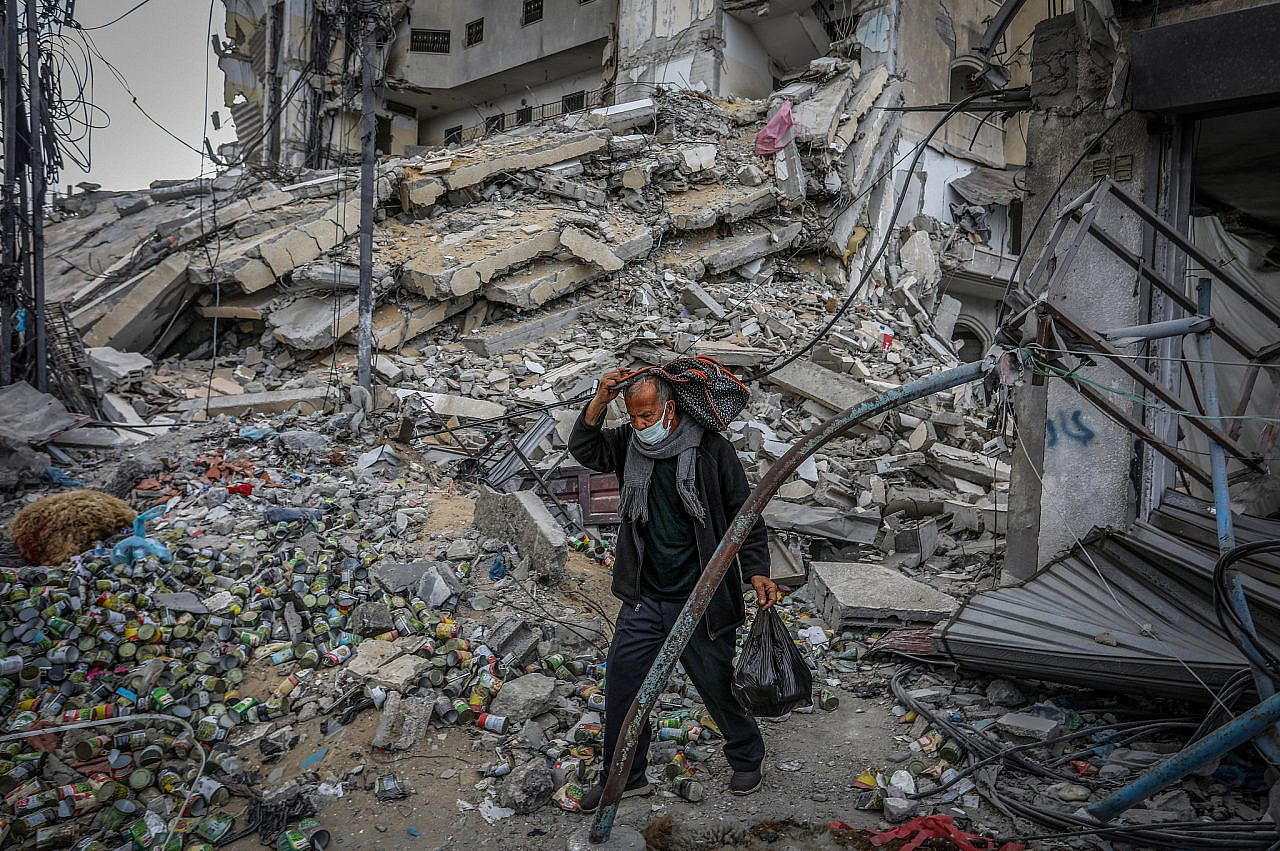
One source who worked with the military data science team that trained Lavender said that data collected from employees of the Hamas-run Internal Security Ministry, whom he does not consider to be militants, was also fed into the machine. “I was bothered by the fact that when Lavender was trained, they used the term ‘Hamas operative’ loosely, and included people who were civil defense workers in the training dataset,” he said.
The source added that even if one believes these people deserve to be killed, training the system based on their communication profiles made Lavender more likely to select civilians by mistake when its algorithms were applied to the general population. “Since it’s an automatic system that isn’t operated manually by humans, the meaning of this decision is dramatic: it means you’re including many people with a civilian communication profile as potential targets.”
‘We only checked that the target was a man’
The Israeli military flatly rejects these claims. In a statement to +972 and Local Call, the IDF Spokesperson denied using artificial intelligence to incriminate targets, saying these are merely “auxiliary tools that assist officers in the process of incrimination.” The statement went on: “In any case, an independent examination by an [intelligence] analyst is required, which verifies that the identified targets are legitimate targets for attack, in accordance with the conditions set forth in IDF directives and international law.”
However, sources said that the only human supervision protocol in place before bombing the houses of suspected “junior” militants marked by Lavender was to conduct a single check: ensuring that the AI-selected target is male rather than female. The assumption in the army was that if the target was a woman, the machine had likely made a mistake, because there are no women among the ranks of the military wings of Hamas and PIJ.
“A human being had to [verify the target] for just a few seconds,” B. said, explaining that this became the protocol after realizing the Lavender system was “getting it right” most of the time. “At first, we did checks to ensure that the machine didn’t get confused. But at some point we relied on the automatic system, and we only checked that [the target] was a man — that was enough. It doesn’t take a long time to tell if someone has a male or a female voice.”
To conduct the male/female check, B. claimed that in the current war, “I would invest 20 seconds for each target at this stage, and do dozens of them every day. I had zero added value as a human, apart from being a stamp of approval. It saved a lot of time. If [the operative] came up in the automated mechanism, and I checked that he was a man, there would be permission to bomb him, subject to an examination of collateral damage.”
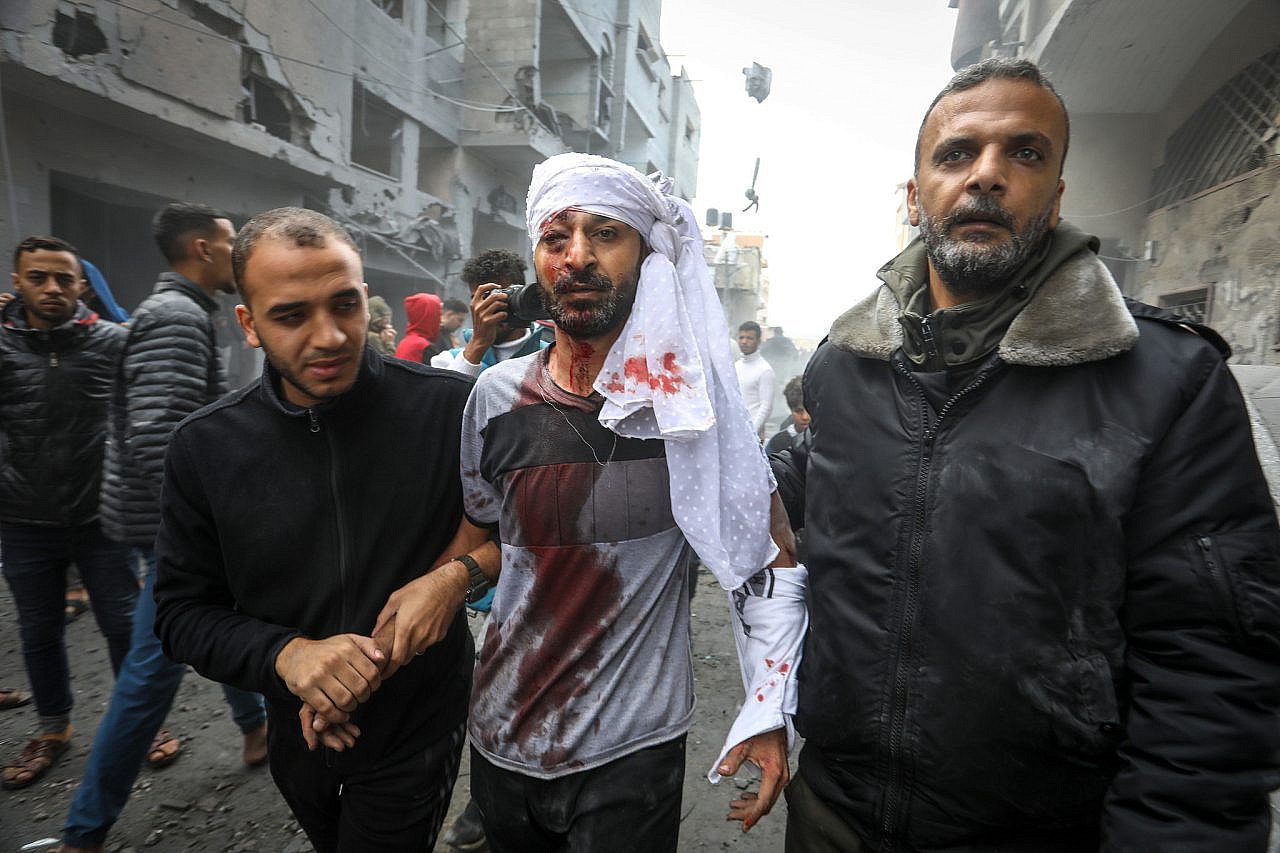
In practice, sources said this meant that for civilian men marked in error by Lavender, there was no supervising mechanism in place to detect the mistake. According to B., a common error occurred “if the [Hamas] target gave [his phone] to his son, his older brother, or just a random man. That person will be bombed in his house with his family. This happened often. These were most of the mistakes caused by Lavender,” B. said.
STEP 2: LINKING TARGETS TO FAMILY HOMES
‘Most of the people you killed were women and children’
The next stage in the Israeli army’s assassination procedure is identifying where to attack the targets that Lavender generates.
In a statement to +972 and Local Call, the IDF Spokesperson claimed in response to this article that “Hamas places its operatives and military assets in the heart of the civilian population, systematically uses the civilian population as human shields, and conducts fighting from within civilian structures, including sensitive sites such as hospitals, mosques, schools and UN facilities. The IDF is bound by and acts according to international law, directing its attacks only at military targets and military operatives.”
The six sources we spoke to echoed this to some degree, saying that Hamas’ extensive tunnel system deliberately passes under hospitals and schools; that Hamas militants use ambulances to get around; and that countless military assets have been situated near civilian buildings. The sources argued that many Israeli strikes kill civilians as a result of these tactics by Hamas — a characterization that human rights groups warn evades Israel’s onus for inflicting the casualties.
However, in contrast to the Israeli army’s official statements, the sources explained that a major reason for the unprecedented death toll from Israel’s current bombardment is the fact that the army has systematically attacked targets in their private homes, alongside their families — in part because it was easier from an intelligence standpoint to mark family houses using automated systems.
Indeed, several sources emphasized that, as opposed to numerous cases of Hamas operatives engaging in military activity from civilian areas, in the case of systematic assassination strikes, the army routinely made the active choice to bomb suspected militants when inside civilian households from which no military activity took place. This choice, they said, was a reflection of the way Israel’s system of mass surveillance in Gaza is designed.
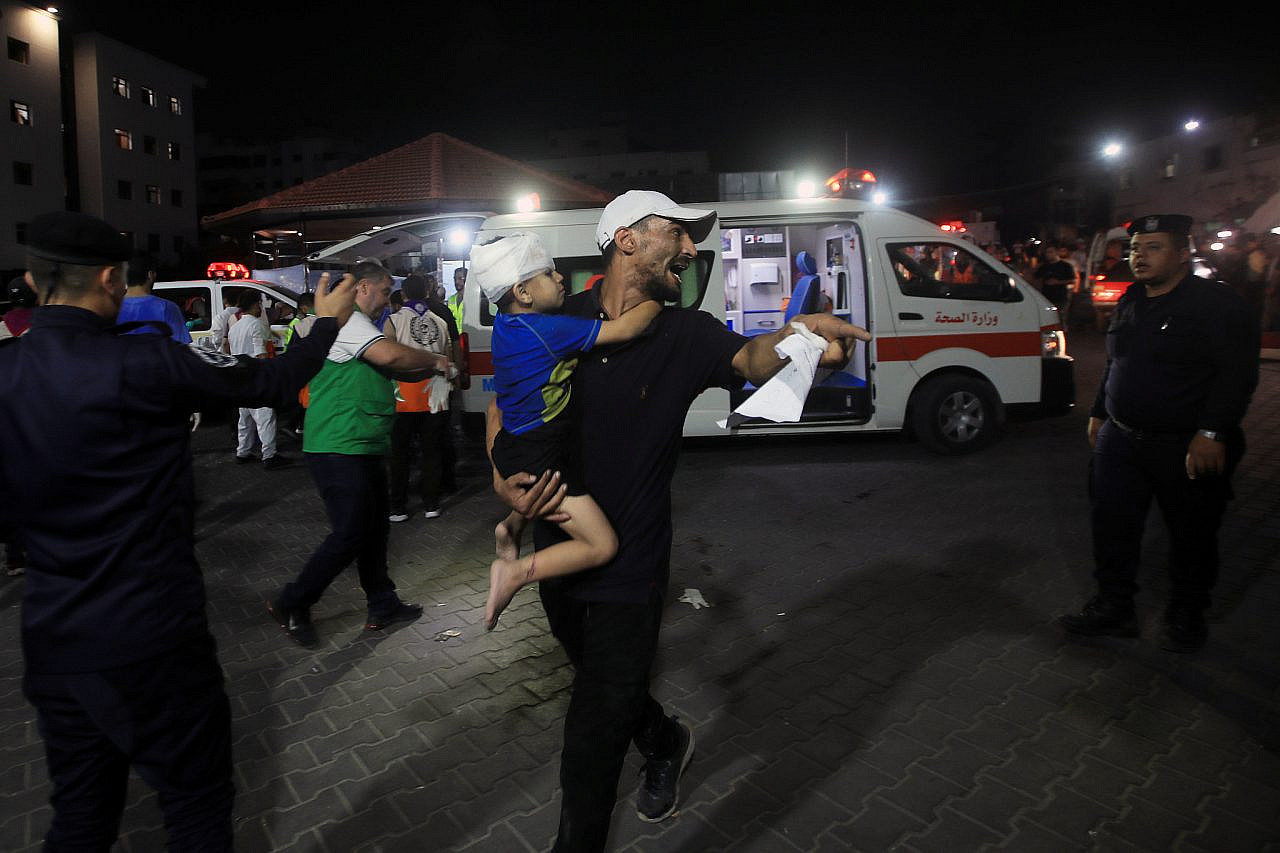
The sources told +972 and Local Call that since everyone in Gaza had a private house with which they could be associated, the army’s surveillance systems could easily and automatically “link” individuals to family houses. In order to identify the moment operatives enter their houses in real time, various additional automatic softwares have been developed. These programs track thousands of individuals simultaneously, identify when they are at home, and send an automatic alert to the targeting officer, who then marks the house for bombing. One of several of these tracking softwares, revealed here for the first time, is called “Where’s Daddy?”
“You put hundreds [of targets] into the system and wait to see who you can kill,” said one source with knowledge of the system. “It’s called broad hunting: you copy-paste from the lists that the target system produces.”
Evidence of this policy is also clear from the data: during the first month of the war, more than half of the fatalities — 6,120 people — belonged to 1,340 families, many of which were completely wiped out while inside their homes, according to UN figures. The proportion of entire families bombed in their houses in the current war is much higher than in the 2014 Israeli operation in Gaza (which was previously Israel’s deadliest war on the Strip), further suggesting the prominence of this policy.
Another source said that each time the pace of assassinations waned, more targets were added to systems like Where’s Daddy? to locate individuals that entered their homes and could therefore be bombed. He said that the decision of who to put into the tracking systems could be made by relatively low-ranking officers in the military hierarchy.
“One day, totally of my own accord, I added something like 1,200 new targets to the [tracking] system, because the number of attacks [we were conducting] decreased,” the source said. “That made sense to me. In retrospect, it seems like a serious decision I made. And such decisions were not made at high levels.”
The sources said that in the first two weeks of the war, “several thousand” targets were initially inputted into locating programs like Where’s Daddy?. These included all the members of Hamas’ elite special forces unit the Nukhba, all of Hamas’ anti-tank operatives, and anyone who entered Israel on October 7. But before long, the kill list was drastically expanded.
“In the end it was everyone [marked by Lavender],” one source explained. “Tens of thousands. This happened a few weeks later, when the [Israeli] brigades entered Gaza, and there were already fewer uninvolved people [i.e. civilians] in the northern areas.” According to this source, even some minors were marked by Lavender as targets for bombing. “Normally, operatives are over the age of 17, but that was not a condition.”
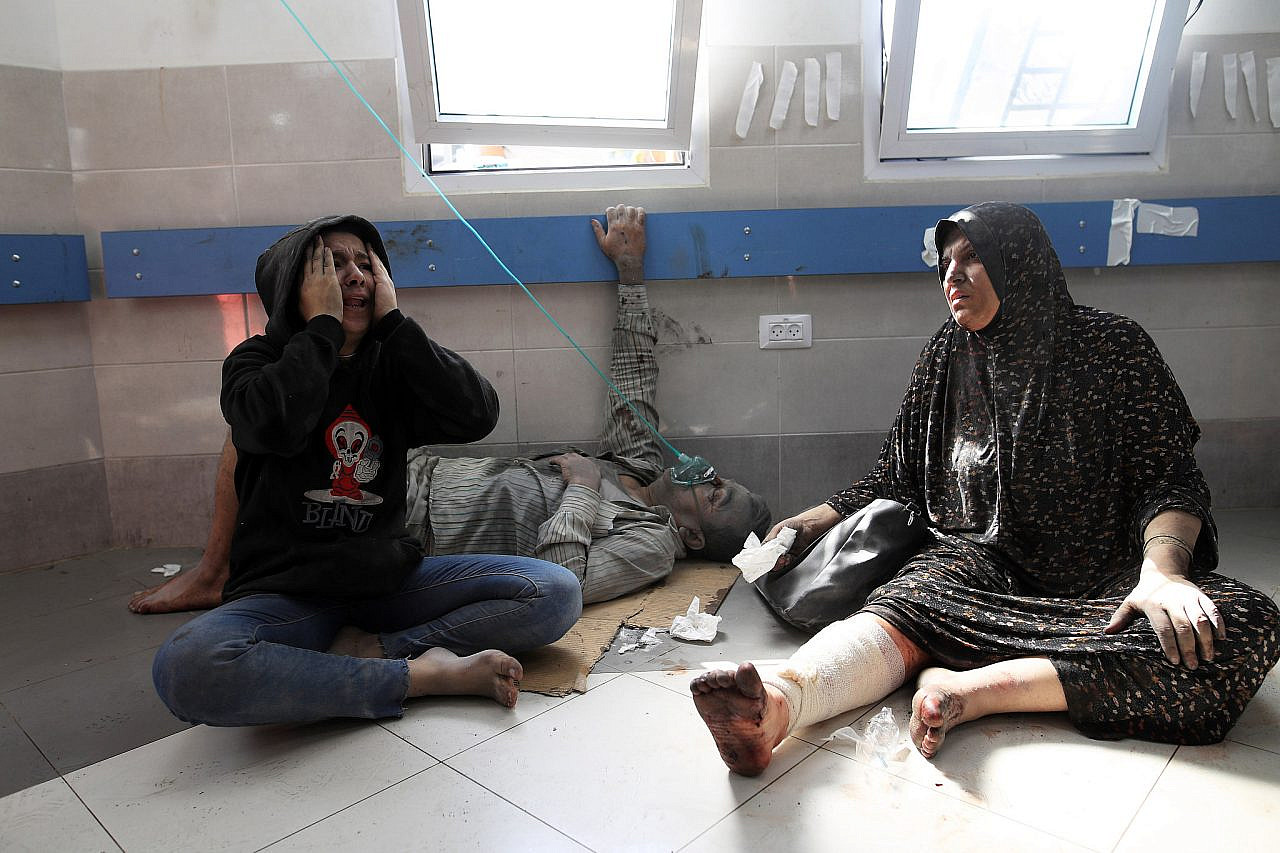
Lavender and systems like Where’s Daddy? were thus combined with deadly effect, killing entire families, sources said. By adding a name from the Lavender-generated lists to the Where’s Daddy? home tracking system, A. explained, the marked person would be placed under ongoing surveillance, and could be attacked as soon as they set foot in their home, collapsing the house on everyone inside.
“Let’s say you calculate [that there is one] Hamas [operative] plus 10 [civilians in the house],” A. said. “Usually, these 10 will be women and children. So absurdly, it turns out that most of the people you killed were women and children.”
STEP 3: CHOOSING A WEAPON
‘We usually carried out the attacks with “dumb bombs”’
Once Lavender has marked a target for assassination, army personnel have verified that they are male, and tracking software has located the target in their home, the next stage is picking the munition with which to bomb them.
In December 2023, CNN reported that according to U.S. intelligence estimates, about 45 percent of the munitions used by the Israeli air force in Gaza were “dumb” bombs, which are known to cause more collateral damage than guided bombs. In response to the CNN report, an army spokesperson quoted in the article said: “As a military committed to international law and a moral code of conduct, we are devoting vast resources to minimizing harm to the civilians that Hamas has forced into the role of human shields. Our war is against Hamas, not against the people of Gaza.”
Three intelligence sources, however, told +972 and Local Call that junior operatives marked by Lavender were assassinated only with dumb bombs, in the interest of saving more expensive armaments. The implication, one source explained, was that the army would not strike a junior target if they lived in a high-rise building, because the army did not want to spend a more precise and expensive “floor bomb” (with more limited collateral effect) to kill him. But if a junior target lived in a building with only a few floors, the army was authorized to kill him and everyone in the building with a dumb bomb.
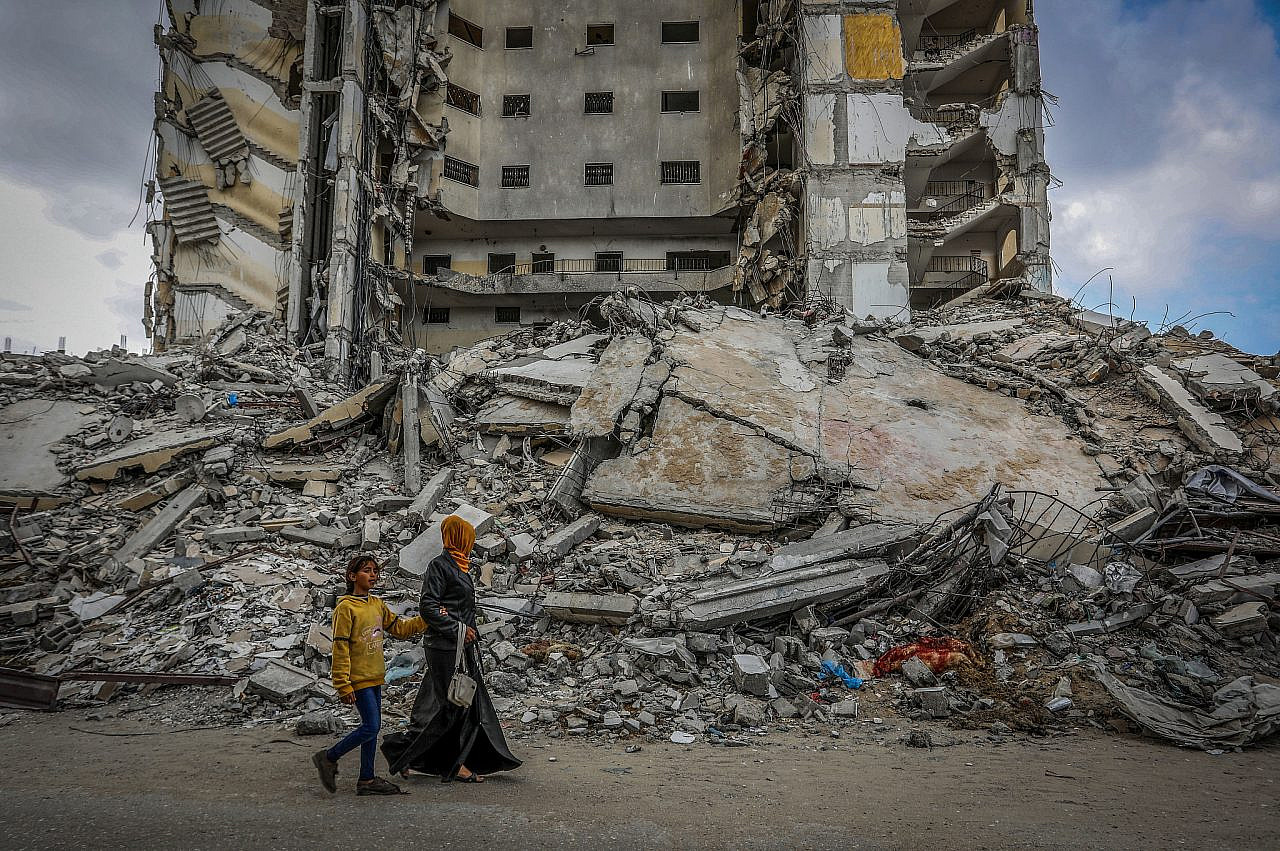
“It was like that with all the junior targets,” testified C., who used various automated programs in the current war. “The only question was, is it possible to attack the building in terms of collateral damage? Because we usually carried out the attacks with dumb bombs, and that meant literally destroying the whole house on top of its occupants. But even if an attack is averted, you don’t care — you immediately move on to the next target. Because of the system, the targets never end. You have another 36,000 waiting.”
STEP 4: AUTHORIZING CIVILIAN CASUALTIES
‘We attacked almost without considering collateral damage’
One source said that when attacking junior operatives, including those marked by AI systems like Lavender, the number of civilians they were allowed to kill alongside each target was fixed during the initial weeks of the war at up to 20. Another source claimed the fixed number was up to 15. These “collateral damage degrees,” as the military calls them, were applied broadly to all suspected junior militants, the sources said, regardless of their rank, military importance, and age, and with no specific case-by-case examination to weigh the military advantage of assassinating them against the expected harm to civilians.
According to A., who was an officer in a target operation room in the current war, the army’s international law department has never before given such “sweeping approval” for such a high collateral damage degree. “It’s not just that you can kill any person who is a Hamas soldier, which is clearly permitted and legitimate in terms of international law,” A. said. “But they directly tell you: ‘You are allowed to kill them along with many civilians.’
“Every person who wore a Hamas uniform in the past year or two could be bombed with 20 [civilians killed as] collateral damage, even without special permission,” A. continued. “In practice, the principle of proportionality did not exist.”
According to A., this was the policy for most of the time that he served. Only later did the military lower the collateral damage degree. “In this calculation, it could also be 20 children for a junior operative … It really wasn’t like that in the past,” A. explained. Asked about the security rationale behind this policy, A. replied: “Lethality.”
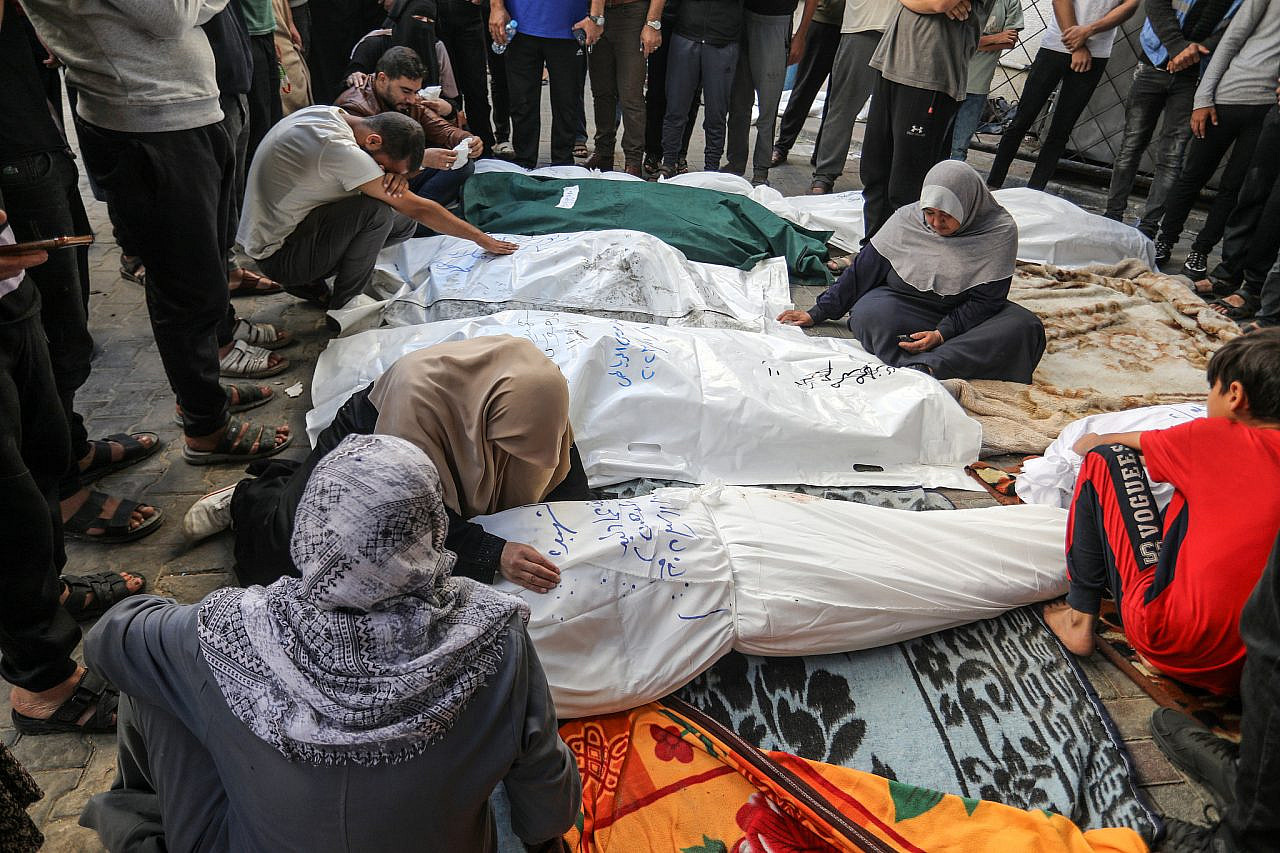
The predetermined and fixed collateral damage degree helped accelerate the mass creation of targets using the Lavender machine, sources said, because it saved time. B. claimed that the number of civilians they were permitted to kill in the first week of the war per suspected junior militant marked by AI was fifteen, but that this number “went up and down” over time.
“At first we attacked almost without considering collateral damage,” B. said of the first week after October 7. “In practice, you didn’t really count people [in each house that is bombed], because you couldn’t really tell if they’re at home or not. After a week, restrictions on collateral damage began. The number dropped [from 15] to five, which made it really difficult for us to attack, because if the whole family was home, we couldn’t bomb it. Then they raised the number again.”
‘We knew we would kill over 100 civilians’
Sources told +972 and Local Call that now, partly due to American pressure, the Israeli army is no longer mass-generating junior human targets for bombing in civilian homes. The fact that most homes in the Gaza Strip were already destroyed or damaged, and almost the entire population has been displaced, also impaired the army’s ability to rely on intelligence databases and automated house-locating programs.
E. claimed that the massive bombardment of junior militants took place only in the first week or two of the war, and then was stopped mainly so as not to waste bombs. “There is a munitions economy,” E. said. “They were always afraid that there would be [a war] in the northern arena [with Hezbollah in Lebanon]. They don’t attack these kinds of [junior] people at all anymore.”
However, airstrikes against senior ranking Hamas commanders are still ongoing, and sources said that for these attacks, the military is authorizing the killing of “hundreds” of civilians per target — an official policy for which there is no historical precedent in Israel, or even in recent U.S. military operations.
“In the bombing of the commander of the Shuja’iya Battalion, we knew that we would kill over 100 civilians,” B. recalled of a Dec. 2 bombing that the IDF Spokesperson said was aimed at assassinating Wisam Farhat. “For me, psychologically, it was unusual. Over 100 civilians — it crosses some red line.”
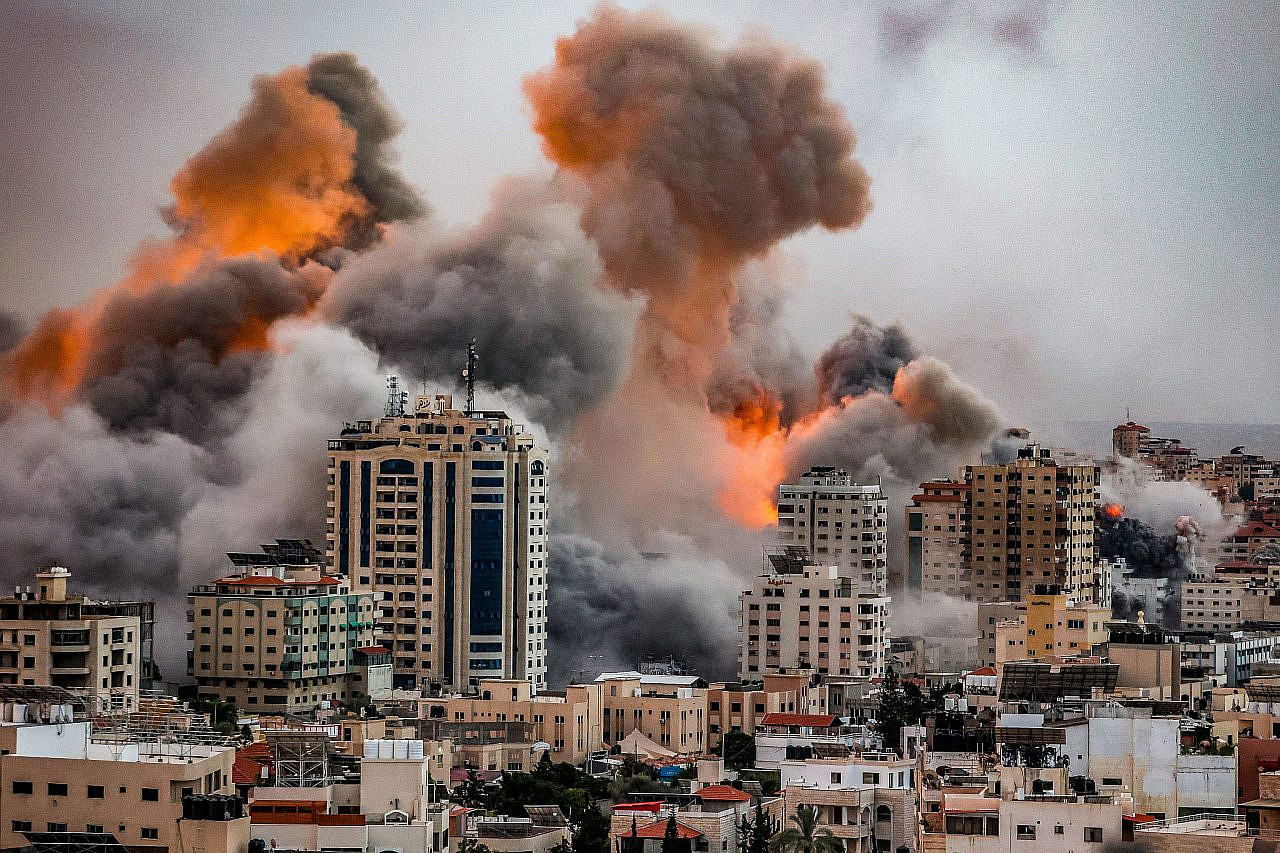
Amjad Al-Sheikh, a young Palestinian from Gaza, said many of his family members were killed in that bombing. A resident of Shuja’iya, east of Gaza City, he was at a local supermarket that day when he heard five blasts that shattered the glass windows.
“I ran to my family’s house, but there were no buildings there anymore,” Al-Sheikh told +972 and Local Call. “The street was filled with screams and smoke. Entire residential blocks turned to mountains of rubble and deep pits. People began to search in the cement, using their hands, and so did I, looking for signs of my family’s house.”
Al-Sheikh’s wife and baby daughter survived — protected from the rubble by a closet that fell on top of them — but he found 11 other members of his family, among them his sisters, brothers, and their young children, dead under the rubble. According to the human rights group B’Tselem, the bombing that day destroyed dozens of buildings, killed dozens of people, and buried hundreds under the ruins of their homes.
‘Entire families were killed’
Intelligence sources told +972 and Local Call they took part in even deadlier strikes. In order to assassinate Ayman Nofal, the commander of Hamas’ Central Gaza Brigade, a source said the army authorized the killing of approximately 300 civilians, destroying several buildings in airstrikes on Al-Bureij refugee camp on Oct. 17, based on an imprecise pinpointing of Nofal. Satellite footage and videos from the scene show the destruction of several large multi-storey apartment buildings.
“Between 16 to 18 houses were wiped out in the attack,” Amro Al-Khatib, a resident of the camp, told +972 and Local Call. “We couldn’t tell one apartment from the other — they all got mixed up in the rubble, and we found human body parts everywhere.”
In the aftermath, Al-Khatib recalled around 50 dead bodies being pulled out of the rubble, and around 200 people wounded, many of them gravely. But that was just the first day. The camp’s residents spent five days pulling the dead and injured out, he said.
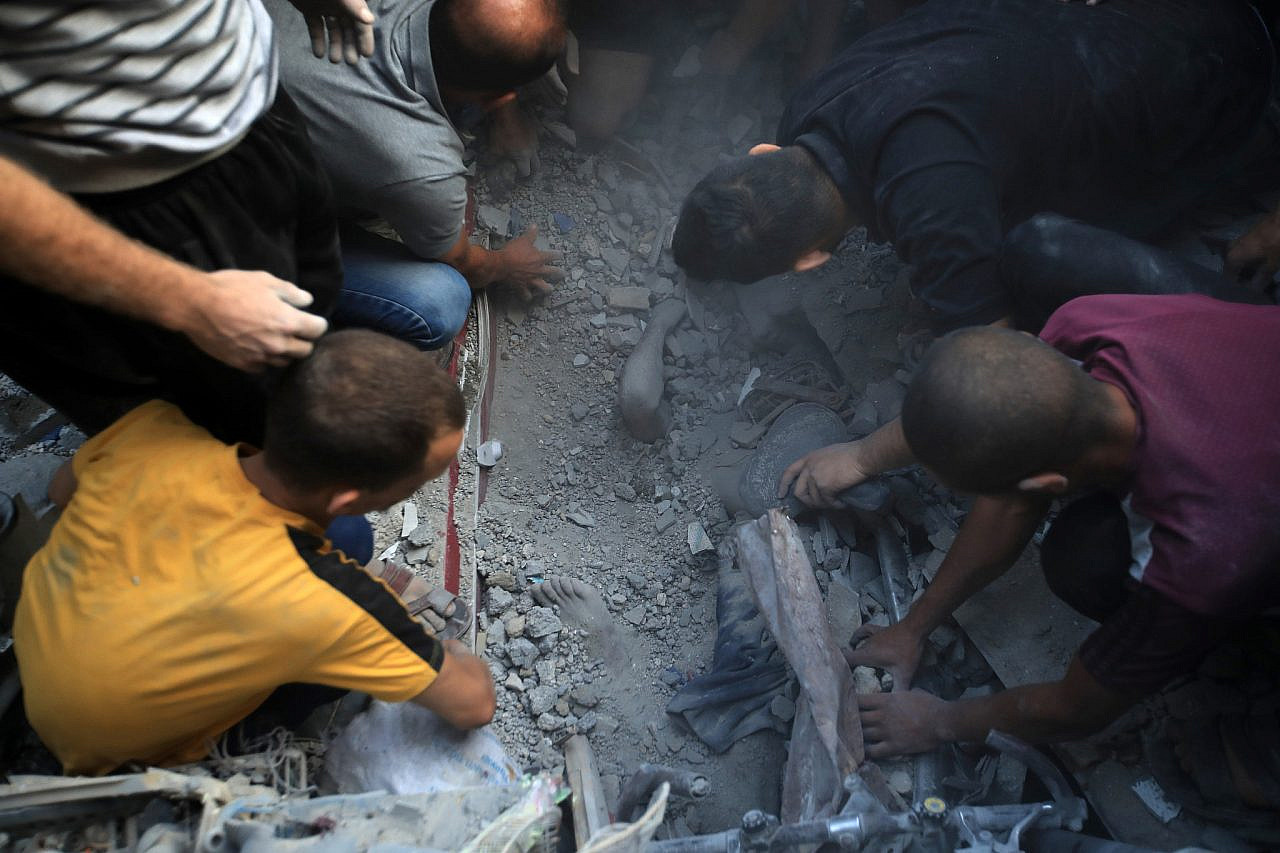
Nael Al-Bahisi, a paramedic, was one of the first on the scene. He counted between 50-70 casualties on that first day. “At a certain moment, we understood the target of the strike was Hamas commander Ayman Nofal,” he told +972 and Local Call. “They killed him, and also many people who didn’t know he was there. Entire families with children were killed.”
Another intelligence source told +972 and Local Call that the army destroyed a high-rise building in Rafah in mid-December, killing “dozens of civilians,” in order to try to kill Mohammed Shabaneh, the commander of Hamas’ Rafah Brigade (it is not clear whether or not he was killed in the attack). Often, the source said, the senior commanders hide in tunnels that pass under civilian buildings, and therefore the choice to assassinate them with an airstrike necessarily kills civilians.
“Most of those injured were children,” said Wael Al-Sir, 55, who witnessed the large-scale strike believed by some Gazans to have been the assassination attempt. He told +972 and Local Call that the bombing on Dec. 20 destroyed an “entire residential block” and killed at least 10 children.
“There was a completely permissive policy regarding the casualties of [bombing] operations — so permissive that in my opinion it had an element of revenge,” D., an intelligence source, claimed. “The core of this was the assassinations of senior [Hamas and PIJ commanders] for whom they were willing to kill hundreds of civilians. We had a calculation: how many for a brigade commander, how many for a battalion commander, and so on.”
“There were regulations, but they were just very lenient,” said E., another intelligence source. “We’ve killed people with collateral damage in the high double-digits, if not low triple-digits. These are things that haven’t happened before.”
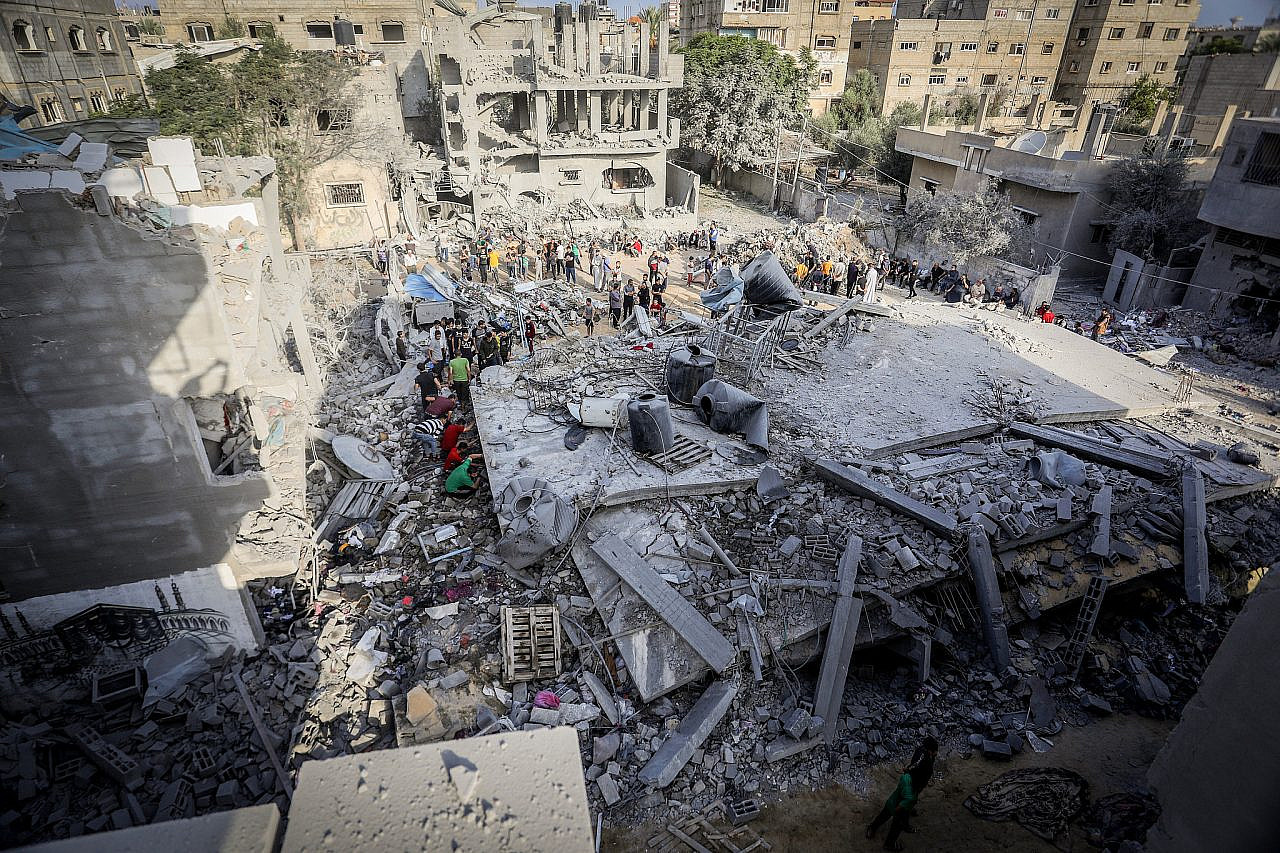
Such a high rate of “collateral damage” is exceptional not only compared to what the Israeli army previously deemed acceptable, but also compared to the wars waged by the United States in Iraq, Syria, and Afghanistan.
General Peter Gersten, Deputy Commander for Operations and Intelligence in the operation to fight ISIS in Iraq and Syria, told a U.S. defense magazine in 2021 that an attack with collateral damage of 15 civilians deviated from procedure; to carry it out, he had to obtain special permission from the head of the U.S. Central Command, General Lloyd Austin, who is now Secretary of Defense.
“With Osama Bin Laden, you’d have an NCV [Non-combatant Casualty Value] of 30, but if you had a low-level commander, his NCV was typically zero,” Gersten said. “We ran zero for the longest time.”
‘We were told: “Whatever you can, bomb”’
All the sources interviewed for this investigation said that Hamas’ massacres on October 7 and kidnapping of hostages greatly influenced the army’s fire policy and collateral damage degrees. “At first, the atmosphere was painful and vindictive,” said B., who was drafted into the army immediately after October 7, and served in a target operation room. “The rules were very lenient. They took down four buildings when they knew the target was in one of them. It was crazy.
“There was a dissonance: on the one hand, people here were frustrated that we were not attacking enough,” B. continued. “On the other hand, you see at the end of the day that another thousand Gazans have died, most of them civilians.”
“There was hysteria in the professional ranks,” said D., who was also drafted immediately after October 7. “They had no idea how to react at all. The only thing they knew to do was to just start bombing like madmen to try to dismantle Hamas’ capabilities.”
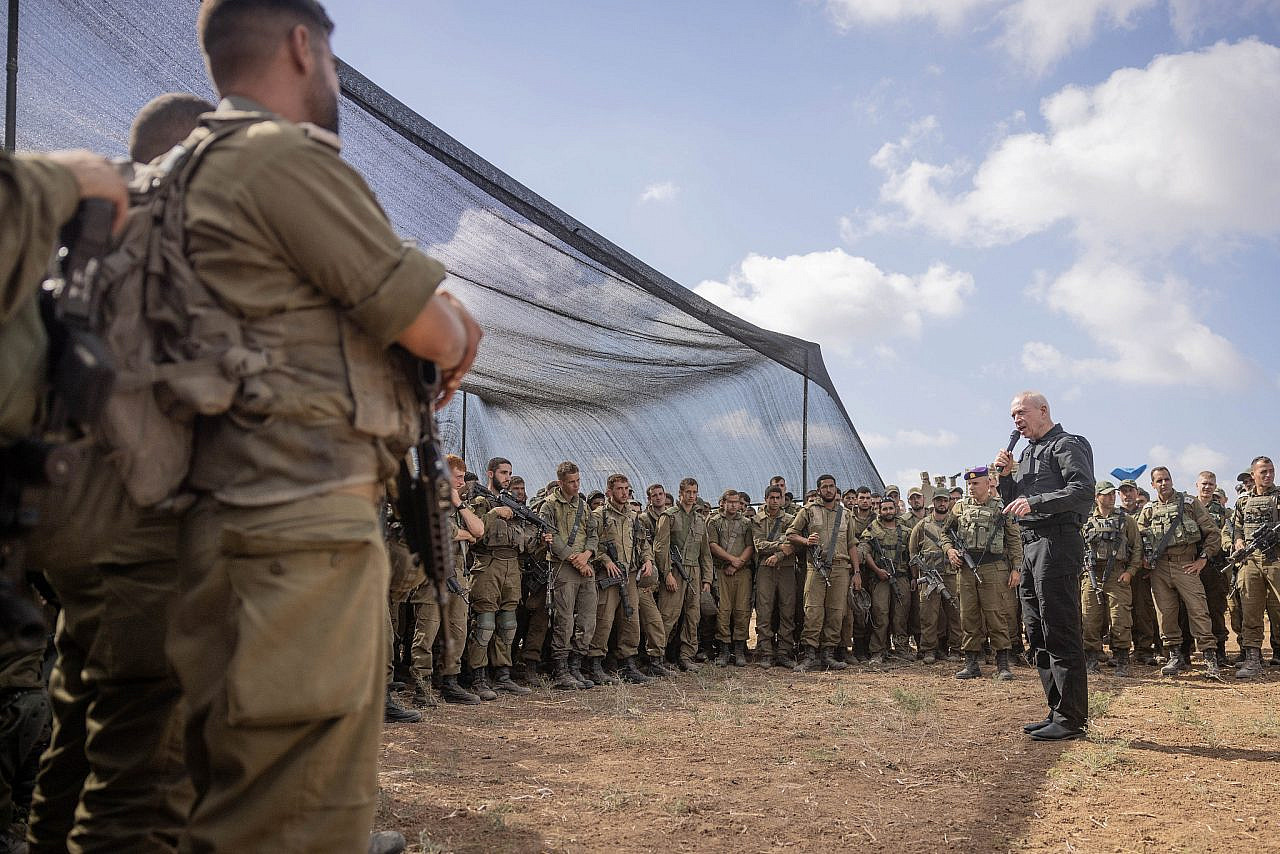
D. stressed that they were not explicitly told that the army’s goal was “revenge,” but expressed that “as soon as every target connected to Hamas becomes legitimate, and with almost any collateral damage being approved, it is clear to you that thousands of people are going to be killed. Even if officially every target is connected to Hamas, when the policy is so permissive, it loses all meaning.”
A. also used the word “revenge” to describe the atmosphere inside the army after October 7. “No one thought about what to do afterward, when the war is over, or how it will be possible to live in Gaza and what they will do with it,” A. said. “We were told: now we have to fuck up Hamas, no matter what the cost. Whatever you can, you bomb.”
B., the senior intelligence source, said that in retrospect, he believes this “disproportionate” policy of killing Palestinians in Gaza also endangers Israelis, and that this was one of the reasons he decided to be interviewed.
“In the short term, we are safer, because we hurt Hamas. But I think we’re less secure in the long run. I see how all the bereaved families in Gaza — which is nearly everyone — will raise the motivation for [people to join] Hamas 10 years down the line. And it will be much easier for [Hamas] to recruit them.”
In a statement to +972 and Local Call, the Israeli army denied much of what the sources told us, claiming that “each target is examined individually, while an individual assessment is made of the military advantage and collateral damage expected from the attack … The IDF does not carry out attacks when the collateral damage expected from the attack is excessive in relation to the military advantage.”
STEP 5: CALCULATING COLLATERAL DAMAGE
‘The model was not connected to reality’
According to the intelligence sources, the Israeli army’s calculation of the number of civilians expected to be killed in each house alongside a target — a procedure examined in a previous investigation by +972 and Local Call — was conducted with the help of automatic and inaccurate tools. In previous wars, intelligence personnel would spend a lot of time verifying how many people were in a house that was set to be bombed, with the number of civilians liable to be killed listed as part of a “target file.” After October 7, however, this thorough verification was largely abandoned in favor of automation.
In October, The New York Times reported on a system operated from a special base in southern Israel, which collects information from mobile phones in the Gaza Strip and provided the military with a live estimate of the number of Palestinians who fled the northern Gaza Strip southward. Brig. General Udi Ben Muha told the Times that “It’s not a 100 percent perfect system — but it gives you the information you need to make a decision.” The system operates according to colors: red marks areas where there are many people, and green and yellow mark areas that have been relatively cleared of residents.
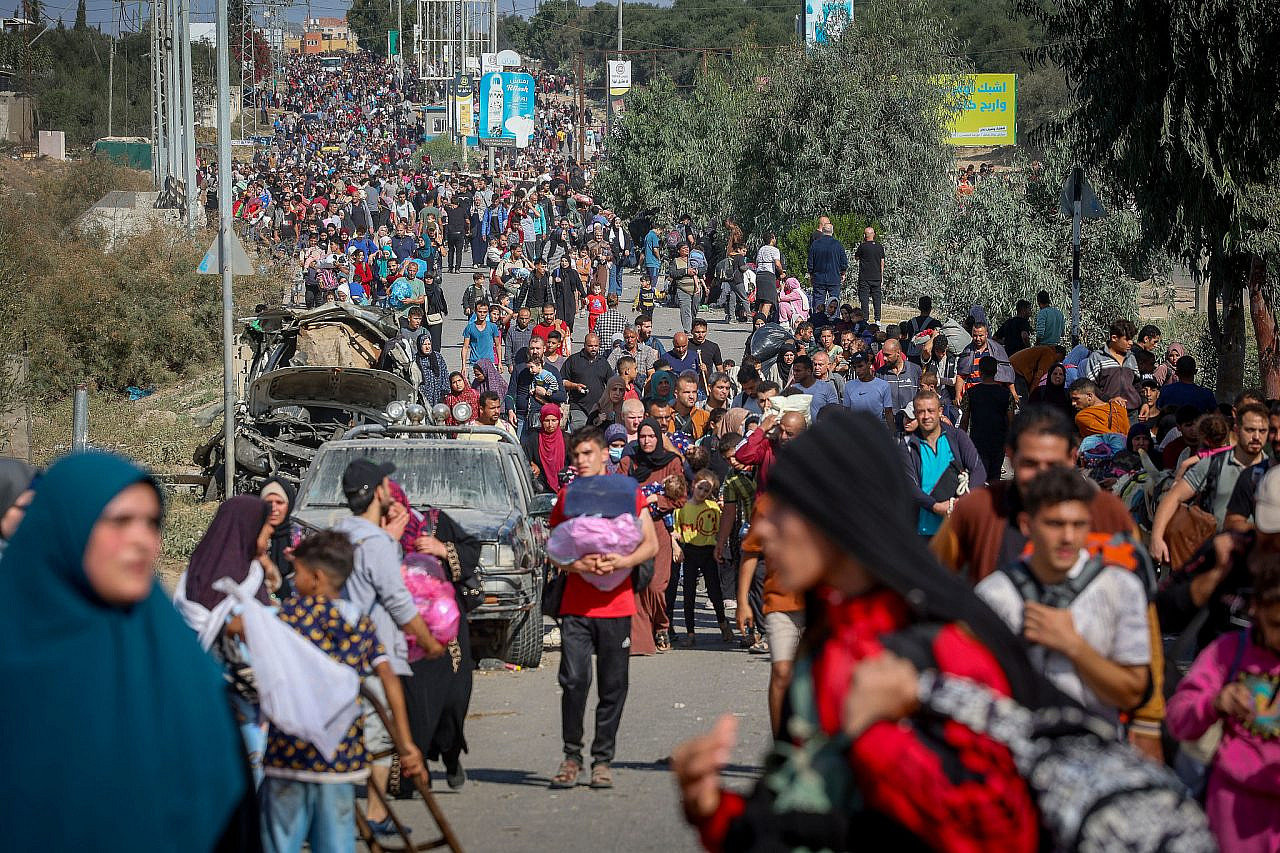
The sources who spoke to +972 and Local Call described a similar system for calculating collateral damage, which was used to decide whether to bomb a building in Gaza. They said that the software calculated the number of civilians residing in each home before the war — by assessing the size of the building and reviewing its list of residents — and then reduced those numbers by the proportion of residents who supposedly evacuated the neighborhood.
To illustrate, if the army estimated that half of a neighborhood’s residents had left, the program would count a house that usually had 10 residents as a house containing five people. To save time, the sources said, the army did not surveil the homes to check how many people were actually living there, as it did in previous operations, to find out if the program’s estimate was indeed accurate.
“This model was not connected to reality,” claimed one source. “There was no connection between those who were in the home now, during the war, and those who were listed as living there prior to the war. [On one occasion] we bombed a house without knowing that there were several families inside, hiding together.”
The source said that although the army knew that such errors could occur, this imprecise model was adopted nonetheless, because it was faster. As such, the source said, “the collateral damage calculation was completely automatic and statistical” — even producing figures that were not whole numbers.
STEP 6: BOMBING A FAMILY HOME
‘You killed a family for no reason’
The sources who spoke to +972 and Local Call explained that there was sometimes a substantial gap between the moment that tracking systems like Where’s Daddy? alerted an officer that a target had entered their house, and the bombing itself — leading to the killing of whole families even without hitting the army’s target. “It happened to me many times that we attacked a house, but the person wasn’t even home,” one source said. “The result is that you killed a family for no reason.”
Three intelligence sources told +972 and Local Call that they had witnessed an incident in which the Israeli army bombed a family’s private home, and it later turned out that the intended target of the assassination was not even inside the house, since no further verification was conducted in real time.
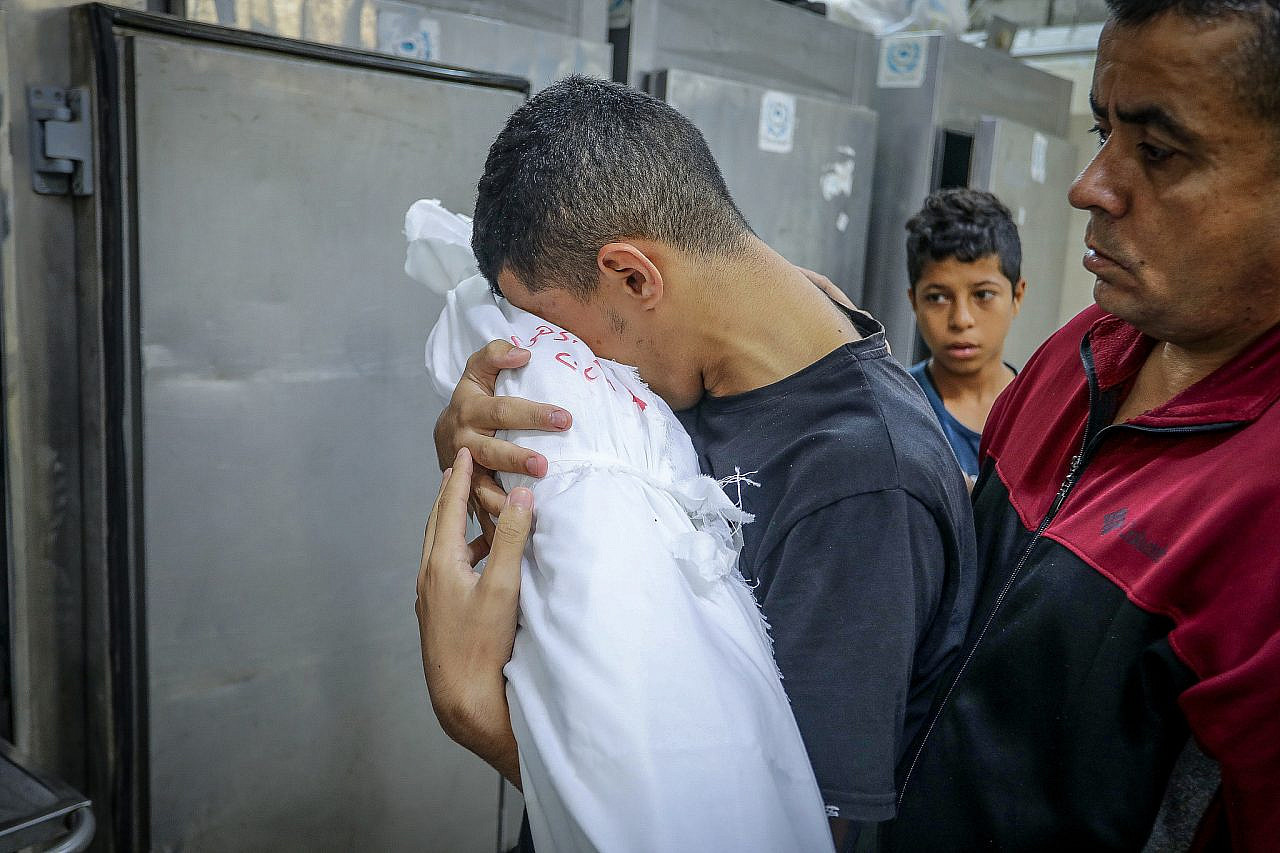
“Sometimes [the target] was at home earlier, and then at night he went to sleep somewhere else, say underground, and you didn’t know about it,” one of the sources said. “There are times when you double-check the location, and there are times when you just say, ‘Okay, he was in the house in the last few hours, so you can just bomb.’”
Another source described a similar incident that affected him and made him want to be interviewed for this investigation. “We understood that the target was home at 8 p.m. In the end, the air force bombed the house at 3 a.m. Then we found out [in that span of time] he had managed to move himself to another house with his family. There were two other families with children in the building we bombed.”
In previous wars in Gaza, after the assassination of human targets, Israeli intelligence would carry out bomb damage assessment (BDA) procedures — a routine post-strike check to see if the senior commander was killed and how many civilians were killed along with him. As revealed in a previous +972 and Local Call investigation, this involved listening in to phone calls of relatives who lost their loved ones. In the current war, however, at least in relation to junior militants marked using AI, sources say this procedure was abolished in order to save time. The sources said they did not know how many civilians were actually killed in each strike, and for the low-ranking suspected Hamas and PIJ operatives marked by AI, they did not even know whether the target himself was killed.
“You don’t know exactly how many you killed, and who you killed,” an intelligence source told Local Call for a previous investigation published in January. “Only when it’s senior Hamas operatives do you follow the BDA procedure. In the rest of the cases, you don’t care. You get a report from the air force about whether the building was blown up, and that’s it. You have no idea how much collateral damage there was; you immediately move on to the next target. The emphasis was to create as many targets as possible, as quickly as possible.”
But while the Israeli military may move on from each strike without dwelling on the number of casualties, Amjad Al-Sheikh, the Shuja’iya resident who lost 11 of his family members in the Dec. 2 bombardment, said that he and his neighbors are still searching for corpses.
“Until now, there are bodies under the rubble,” he said. “Fourteen residential buildings were bombed with their residents inside. Some of my relatives and neighbors are still buried.”

